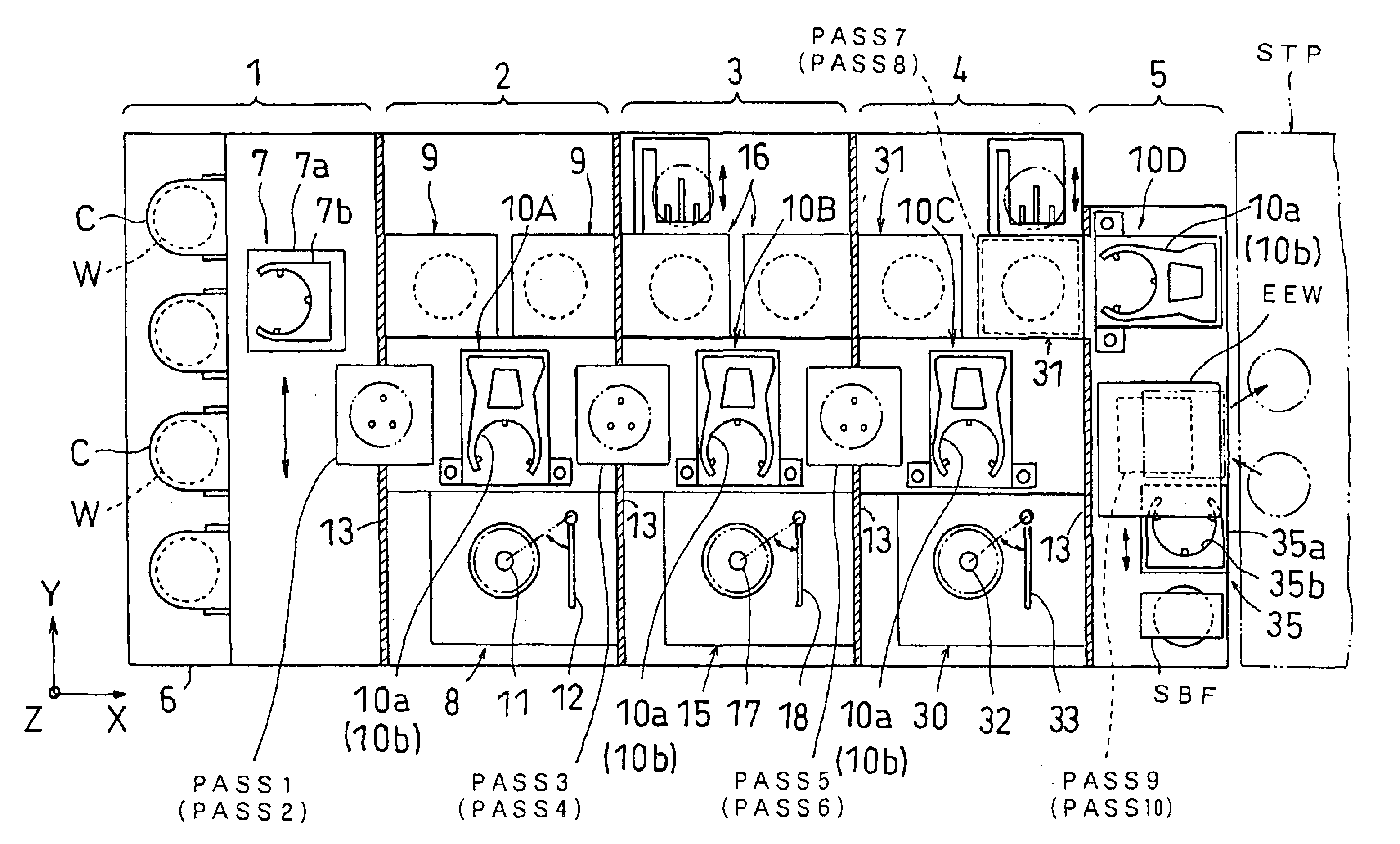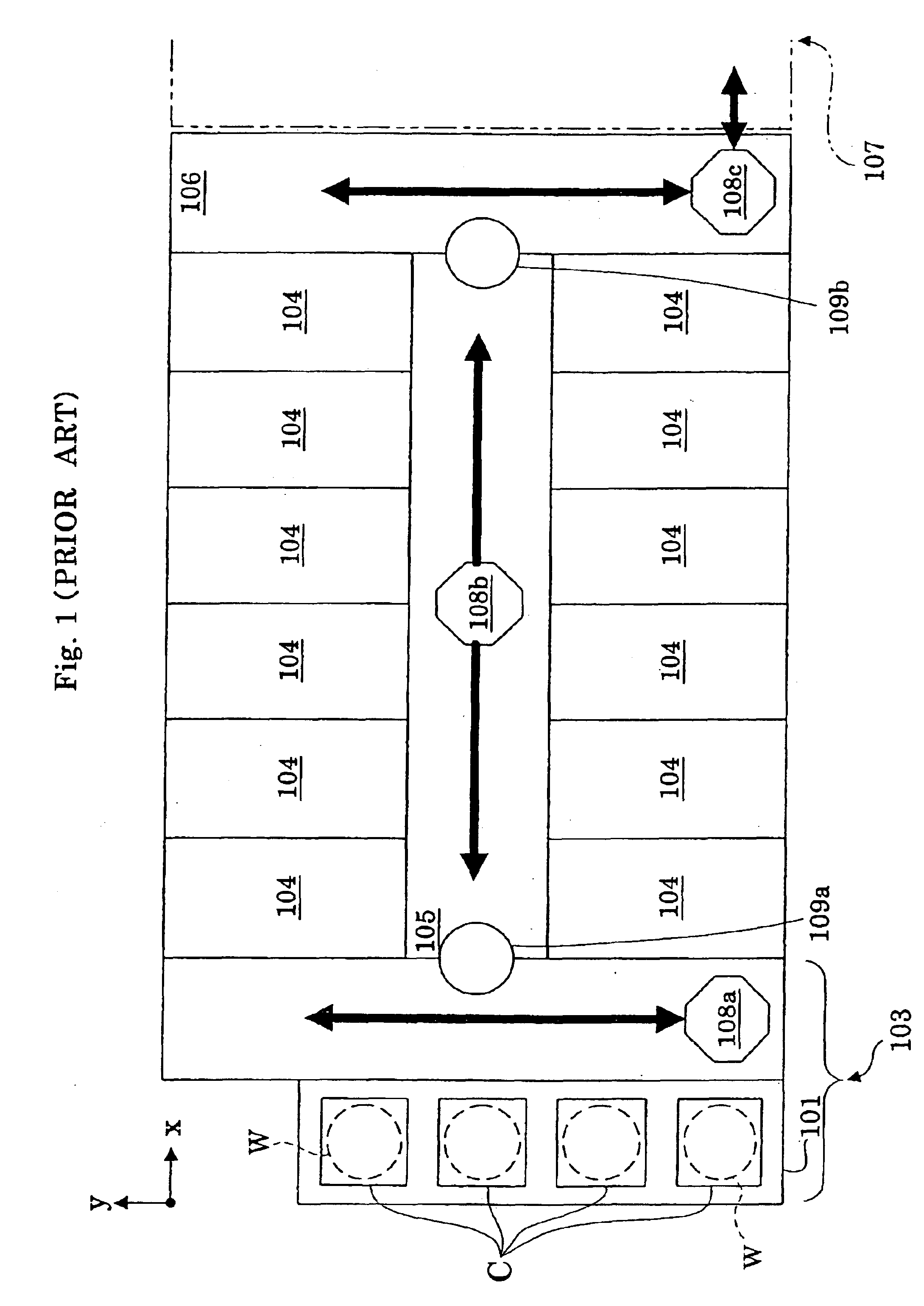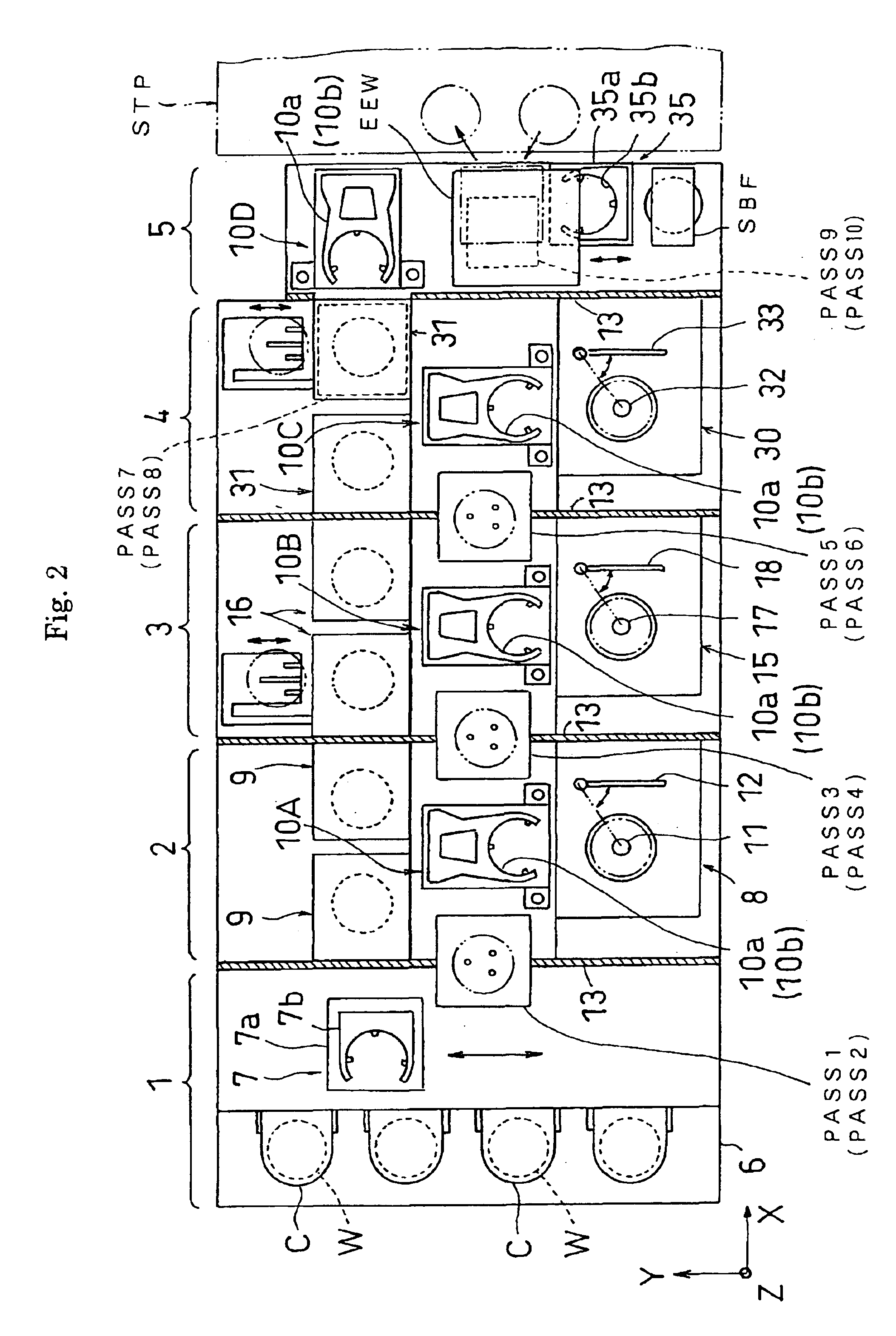Substrate treating apparatus
- Summary
- Abstract
- Description
- Claims
- Application Information
AI Technical Summary
Benefits of technology
Problems solved by technology
Method used
Image
Examples
Embodiment Construction
A preferred embodiment of this invention will be described in detail hereinafter with reference to the drawings.
FIG. 2 is a plan view showing an outline of a substrate treating apparatus according to this invention. FIG. 3 is a front view of the apparatus. FIG. 4 is a front view of heat-treating modules.
This substrate treating apparatus is constructed to perform chemical treatment for forming antireflection film and photoresist film on semiconductor wafers (hereinafter called simply “substrates or wafers”), and developing exposed substrates. The substrates handled by the substrate treating apparatus according to this invention are, of course, not limited to semiconductor wafers, but include various substrates such as glass substrates for liquid crystal displays. The chemical treatment is not limited to formation of photoresist film or the like or development, but includes various other chemical treatments.
FIG. 2 refers. The substrate treating apparatus in this embodiment, broadly, i...
PUM
 Login to View More
Login to View More Abstract
Description
Claims
Application Information
 Login to View More
Login to View More - R&D
- Intellectual Property
- Life Sciences
- Materials
- Tech Scout
- Unparalleled Data Quality
- Higher Quality Content
- 60% Fewer Hallucinations
Browse by: Latest US Patents, China's latest patents, Technical Efficacy Thesaurus, Application Domain, Technology Topic, Popular Technical Reports.
© 2025 PatSnap. All rights reserved.Legal|Privacy policy|Modern Slavery Act Transparency Statement|Sitemap|About US| Contact US: help@patsnap.com



